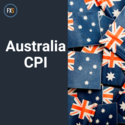Equity markets sour
Equity markets have struggled badly over the last 24 hours, and you can easily pick your poison: a combination of lower oil prices, a stronger Yen and tepid economic data in the Eurozone. We also have Christine Lagarde to thank for severely dampening investor sentiment. The IMF boss stated that it will cut its global economic forecasts as the current pace of recovery is “ too slow, too fragile.”

There will be some interest in the event tonight, but with the Statement likely to reinforce Yellen’s dovish stance, and it will be more a case of trader deciding if the Fed is very Dovish or Extremely dovish so dealers will likely split hairs on this debate post release.
Asian currencies
YEN
USDJPY was the main focus for G-10 traders overnight as the pair moved below 110 levels. While the move has been fairly orderly, it came on the back of comments from Chief Cabinet Secretary Yoshihide Suga that the government would be watching FX markets with a “sense of urgency”. This comment came after a joint monetary policy meeting between the MoF, the BoJ and the FSA yesterday afternoon. Predictably the comments were received negatively as the market lacks confidence that the BoJ has any policy measures in its arsenal to prevent the double whammy of increased risk aversion and USD dollar weakness to prevent YEN appreciation . With the government nervous and backed into a corner, investor confidence has been severely rattled.
Also, comments from Prime Minister Abe downplaying the likelihood of intervention likely exacerbated the move . However, traders must be very careful not to fall into a short-term bear trap without any top side protection if the BoJ decides to intervene.

YUAN
The market is taking cues from the USDJPY capitulation and the general unwind of JPY funded carry trade. Overall CNH volumes continue to run quietly with an overall USD buying skew
EM Asia continued to slide through overnight trading as risk appetite soured.The drop in WTI continues to weigh negatively also in EM Asia
Volatility has picked up a touch, but it’s primarily around the fix as the new fixing regime is showing signs of greater flexibility and reflecting actual market sentiment. However the CNH has remained very stable this month, and this might account for traders lack of enthusiasm toward CNH trade.
Pboc sets today’s midpoint at 6.4754 vs. 6.4663 prior +91 as the Central Bank continues to allow the fix dictated by market trade as overnight weakness in both the Aussie dollar and Euro contributed to the YUAN piloted depreciation
The China March Caixin PMI services are printed 52.2 adding to the recent string on positive PMI.Should be a small boost to risk sentiment but likely a fleeting one

Malaysian Ringgit
USDMYR has been trading off 2016 lows as oil prices have continued to slide on the fallout from expectations that this month’s OPEC meeting will do little to curb supply. While there is a very strong correlation between oil prices and the Ringgit, greater convexity appears to be taking hold with the Ringgit’s reaction to lower oil prices less dramatic than its reaction to higher oil prices. I think the convexity is a result of foreign investors believing oil prices have bottomed, so they are willing to ignore the recent interday drops and sell into USDMYR upticks. However, the MYR is feeling the effect of the recent risk aversion where foreign investors seek the relative safety of 10-year USD treasuries as opposed to chasing EM yields. But I continue to expect the market to be better sellers of USDMYR over the short term
The Aussie dollar
The Aussie was a standout underperformer overnight testing the 0.7530 level as a combination of lower commodity price and risk-off sentiment weighed negatively on the currency. However, domestically the last two economic readings have been far from supportive. With an underwhelming retail sales print fresh on traders’ minds, Australia’s trade deficit bulged $3.41 billion in February versus an expected decline of $2.5 billion. With key commodity prices such as iron ore heading south again, expanding trade deficits will likely continue to weigh negatively on the Aussie unless there’s a surprise increase in demand from China.
On the central bank watch, the RBA left its cash rate target unchanged at 2% as universally expected. Again ignoring the temptation to enter the “currency wars” by slashing rates, the RBA language was neither tough nor plentiful enough to talk the currency down. This guidance would suggest that the Aussie will remain a trader- friendly environment and should continue to benefit when the dollar downtrend resumes in full force.
It appears the RBA is willing to milk the solid performance of the labour market through 2016, and would prefer to keep the cash rate at 2%. However, the recent inflation data certainly gives the RBA plenty of reasons to ease. Specifically, if the Aussie trajectory continues moving higher and the CPI reading misses on the downside, it should mean a May RBA OCR is “live.”
In early APAC trade, the Aussie is trading off overnight night lows as WTI Oil futures are rebounding at this morning Futures Open. Oil prices are moving higher that there may be a freeze agreed at next this months OPEC summit. The Kuwaiti governor for the OPEC, Nawal Al-Fuzaia, said overnight that there were “positive indications an agreement will be reached” during a producer meeting scheduled for April 17 in Qatar. But with so much back and forth on this topic, it’s difficult to place one’s chips on either side of the table

SPI Asset Management provides forex, commodities, and global indices analysis, in a timely and accurate fashion on major economic trends, technical analysis, and worldwide events that impact different asset classes and investors.
Our publications are for general information purposes only. It is not investment advice or a solicitation to buy or sell securities.
Opinions are the authors — not necessarily SPI Asset Management its officers or directors. Leveraged trading is high risk and not suitable for all. Losses can exceed investments.
Recommended Content
Editors’ Picks
AUD/USD rises to two-day high ahead of Aussie CPI

The Aussie Dollar recorded back-to-back positive days against the US Dollar and climbed more than 0.59% on Tuesday, as the US April S&P PMIs were weaker than expected. That spurred speculations that the Federal Reserve could put rate cuts back on the table. The AUD/USD trades at 0.6488 as Wednesday’s Asian session begins.
EUR/USD now refocuses on the 200-day SMA

EUR/USD extended its positive momentum and rose above the 1.0700 yardstick, driven by the intense PMI-led retracement in the US Dollar as well as a prevailing risk-friendly environment in the FX universe.
Gold price on the defensive, amid soft US Dollar

Gold retreats modestly after failing to sustain gains despite fall in US Treasury yields, weaker US Dollar. XAU/USD struggles to capitalize following release of weaker-than-expected S&P Global PMIs, fueling speculation about potential Fed rate cuts.
Ethereum continues hinting at rally following reduced long liquidations

Ethereum has continued showing signs of a potential rally on Tuesday as most coins in the crypto market are also posting gains. This comes amid speculation of a potential decline following FTX ETH sales and normalizing ETH risk reversals.
Australia CPI Preview: Inflation set to remain above target as hopes of early interest-rate cuts fade

An Australian inflation update takes the spotlight this week ahead of critical United States macroeconomic data. The Australian Bureau of Statistics will release two different inflation gauges on Wednesday.